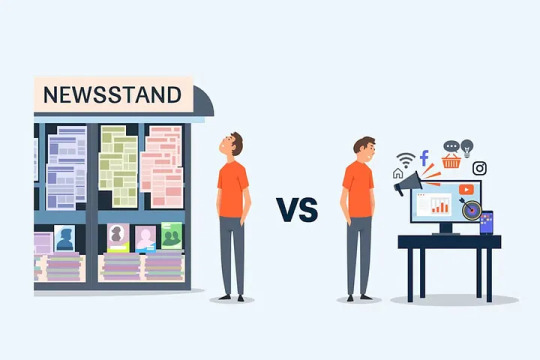#targeted advertising India
Explore tagged Tumblr posts
Text
Hire Dedicated PPC Experts in India to maximize your online advertising campaigns and achieve high ROI. Indian PPC professionals are skilled in managing Google Ads, Bing Ads, and social media advertising, offering expertise in keyword research, campaign setup, A/B testing, and performance optimization. By outsourcing to India, you gain cost-effective solutions, targeted strategies, and real-time analytics to boost traffic and conversions. Partner with India’s dedicated PPC experts to enhance your digital marketing efforts and drive measurable business growth. Contact Hire in Any Domain at 876-633-4467 or email [email protected] to find the right accountant for your business.
#hire dedicated PPC experts in India#PPC experts India#hire PPC experts#dedicated PPC experts#PPC management India#outsource PPC to India#PPC experts for hire#digital advertising India#paid marketing India#PPC campaigns India#Google Ads experts#affordable PPC services#pay-per-click experts#hire PPC professionals#targeted advertising India#PPC strategies India#online advertising experts#outsourcing PPC experts
0 notes
Text
Meta Ads for Real Estate in India: A Beginner’s Guide to Generating High-Quality Leads
It is possible to unlock the potential of Meta ads to enhance your success in the real estate market of India and thereby increase your leads. In this guide, you will learn how to leverage Meta ads to generate quality leads. The Untapped Potential of Meta Ads in India’s Real Estate Market India’s real estate market is one of the fastest-growing sectors, attracting significant attention from…
#Commercial Buildings#Delhi Skyline#Digital Marketing#Facebook Ads#High-Rise Apartments#India#Indian Properties#Innovation#Lead Generation#Luxury Real Estate#Marketing Strategy#Marketing Success#Meta Ads#Modern Villas#Mumbai Skyline#Online Advertising#Property Growth#Real Estate#real estate marketing#Targeted Advertising
1 note
·
View note
Text
Boost Your Brand’s Visibility with Unipole Hoarding Advertising in Chennai
Ring Us: +91 98404 86666 Mail Us: [email protected]
In a city as dynamic as Chennai, standing out in a crowded market is no easy feat. That’s where unipole hoarding advertising agencies in Chennai come in, helping brands create powerful, high-impact ads through strategic unipole hoarding advertising. Here’s how partnering with an experienced agency can help amplify your reach, along with some tips to ensure your billboard hoarding campaign resonates with your audience.
Why Choose Unipole Hoarding Advertising?
Unipole hoardings are massive, eye-level structures that capture the attention of daily commuters. These towering ads stand tall in high-traffic areas, making them ideal for roadside advertising hoarding campaigns. With an extensive range of services, Chennai’s leading unipole hoarding advertising agencies offer premium visibility that’s hard to overlook, enhancing brand recall among target customers.
Advantages of Billboard and Electronic Hoardings
While traditional billboard and hoarding options are effective, electronic hoarding advertising offers a unique advantage. Digital billboards allow you to display rotating messages, which can improve engagement by keeping your ad dynamic and fresh. This adaptability makes electronic advertising hoarding a top choice for brands that want to connect with audiences at different times of day, increasing message retention.
Cost-Effective Advertising Solutions
Budget considerations are essential for any business. Partnering with an agency provides transparency on hoarding advertising prices, helping you choose options that fit your budget and maximize your ROI with Chennai hoarding. Local searches like “hoarding advertising near me” can help you find agencies with competitive pricing, especially for banner hoarding or seasonal campaigns.
Tips for Creating Engaging Hoarding Content
Simplicity in Design: With limited time to capture attention, make your message bold and straightforward.
Consistency Across Platforms: Ensure your out-of-home advertising align with your digital marketing service. This reinforces brand identity across touchpoints.
Compelling Visuals and CTAs: Use high-resolution images and add a strong call-to-action to encourage immediate customer interaction.
Leveraging Hoardings and Banners for Targeted Promotions
For brands that want a hyper-local impact, consider hoarding and banner ads. These are especially effective for time-sensitive promotions or event announcements. Combining digital and traditional ads creates a holistic approach, reaching audiences both online and offline.
Conclusion
Unipole hoarding advertising, We offer a cost-effective way to build lasting brand impressions. By working with top-rated agencies and exploring both traditional and electronic advertising hoardings, you can achieve high engagement and improved visibility. Remember, strategic placement, clear design, and consistency are essential to maximize your impact and elevate your brand’s presence in Chennai’s bustling market.
#advertising#branding#brand awareness#target audience#outdoor ads#outdoor advertising#hoarding#ads#chennai#india#billboardmarketing#billboards#unipole advertising#unipole
0 notes
Text
Significance Of Pay Per Click To Build Your Business
the significance of Pay Per Click(PPC) advertising in building a business cannot be overstated. It provides businesses with instant visibility, flexibility, and scalability, allowing them to reach their target audience directly and generate quality leads. By leveraging the power of PPC, businesses can effectively build their online presence, increase brand awareness, and drive targeted traffic to their websites, ultimately leading to business growth and success.
#PPC Boost#Business Growth#Digital Advertising#Online Marketing#PPC Strategy#Targeted Ads#Increase Visibility#Drive Traffic#Conversion Rate#ROI#PPC Management#Ad Campaigns#Business Success#PPC Advertising#Online Visibility#PPC Expert#Marketing Strategy#PPC Success#Business Expansion#PPC Results#Levycon India#Pay Per Click Advertising#Digital Marketing#Online Advertising#Increase Sales#Targeted Traffic#Brand Awareness#Lead Generation#Cost Effective Advertising#PPC Tips
0 notes
Text
Importance of Digital Marketing Compared to Old-Time Newspaper Marketing

There is no denying that the Internet, coupled with technological advancements, has revolutionized the face of marketing. Earlier, the best and the most effective way to promote a business was to get display ads printed in newspapers. But times have changed. Today’s generation is more hooked to the digital world than printed media. Consequently, there is a growing need to shift focus on digital marketing. There is no exception for the healthcare industry as well.
What is Healthcare Digital Marketing?
In healthcare, digital marketing refers to using digital platforms such as social media and websites as tools for marketing communication. The “sponsored ads” that pop up on your social feed and the emails you get from healthcare companies are all a part of digital marketing.
Trends in Healthcare Digital Marketing in India
The past few years have been witness to India emerging as one of the fastest-growing digital economies globally. The period between 2014 and 2017 saw the digital adoption index growing by 90%. Regarding revenue, the Indian digital healthcare market stood at a valuation of $ 116.61 billion in 2018. The numbers will expectedly hit INR 485.43 billion by 2024, with a CAGR of around 27.41% during the years 2019–2024. (Source.)
Why Are the Downsides of Traditional Marketing?
The traditional marketing mode is a conventional method to reach out to a semi-targeted audience through various offline advertising methods. It usually comes in prints, broadcasts, direct mail, telephone, and outdoor advertising like billboards. However, conventional marketing has the following drawbacks:
Very costly
Almost no direct interaction with the audience
Making updates is not easy in a static newspaper ad or an already aired TV commercial.
No room for customizations to target a specific audience
Measuring ROI becomes tough.
The rate of leads converting into paying customers is meager.
Receiving feedback is not easy.
Why Go Digital with Healthcare Marketing?
As per ClickZ, the global population has 57% internet users with an average online activity of 6 hours 42 minutes each day. (Source) With different channels like social media, websites, content marketing, pay-per-click, and more, there can be no better time to tap the digital platform’s potential. While traditional newspaper marketing is still useful, technology makes it easier to broaden your outreach, especially when offering something essential, like healthcare services. So here are the top benefits of adopting digital marketing:
Better audience profiling
Direct interaction with the target audience.
Better prediction of customer behavior
Easier to get feedbacks on your service or brand
Tracking your marketing progress is easy.
Cost-effective compared to traditional advertising.
Enough scope for customizing and updating marketing communication
Conclusion
With progressive government policies, India’s robust digital footprint has played a vital role in nurturing the country’s digital healthcare ecosystem. Healthcare providers are turning to digital media to grow their business while offering their services to the public. Digital marketing has promising prospects for the future, far outweighing the limitations posed by traditional marketing.
There is no denying that the Internet, coupled with technological advancements, has revolutionized the face of marketing. Earlier, the best and the most effective way to promote a business was to get display ads printed in newspapers. But times have changed. Today’s generation is more hooked to the digital world than printed media. Consequently, there is a growing need to shift focus on digital marketing. There is no exception for the healthcare industry as well.
What is Healthcare Digital Marketing?
In healthcare, digital marketing refers to using digital platforms such as social media and websites as tools for marketing communication. The “sponsored ads” that pop up on your social feed and the emails you get from healthcare companies are all a part of digital marketing.
Trends in Healthcare Digital Marketing in India
The past few years have been witness to India emerging as one of the fastest-growing digital economies globally. The period between 2014 and 2017 saw the digital adoption index growing by 90%. Regarding revenue, the Indian digital healthcare market stood at a valuation of $ 116.61 billion in 2018. The numbers will expectedly hit INR 485.43 billion by 2024, with a CAGR of around 27.41% during the years 2019–2024. (Source.)
Why Are the Downsides of Traditional Marketing?
The traditional marketing mode is a conventional method to reach out to a semi-targeted audience through various offline advertising methods. It usually comes in prints, broadcasts, direct mail, telephone, and outdoor advertising like billboards. However, conventional marketing has the following drawbacks:
Very costly
Almost no direct interaction with the audience
Making updates is not easy in a static newspaper ad or an already aired TV commercial.
No room for customizations to target a specific audience
Measuring ROI becomes tough.
The rate of leads converting into paying customers is meager.
Receiving feedback is not easy.
Why Go Digital with Healthcare Marketing?
As per ClickZ, the global population has 57% internet users with an average online activity of 6 hours 42 minutes each day. (Source) With different channels like social media, websites, content marketing, pay-per-click, and more, there can be no better time to tap the digital platform’s potential. While traditional newspaper marketing is still useful, technology makes it easier to broaden your outreach, especially when offering something essential, like healthcare services. So here are the top benefits of adopting digital marketing:
Better audience profiling
Direct interaction with the target audience.
Better prediction of customer behavior
Easier to get feedbacks on your service or brand
Tracking your marketing progress is easy.
Cost-effective compared to traditional advertising.
Enough scope for customizing and updating marketing communication
Conclusion
With progressive government policies, India’s robust digital footprint has played a vital role in nurturing the country’s digital healthcare ecosystem. Healthcare providers are turning to digital media to grow their business while offering their services to the public. Healthcare Digital marketing has promising prospects for the future, far outweighing the limitations posed by traditional marketing.
Source: https://comhes.com/
#There is no denying that the Internet#coupled with technological advancements#has revolutionized the face of marketing. Earlier#the best and the most effective way to promote a business was to get display ads printed in newspapers. But times have changed. Today’s gen#there is a growing need to shift focus on digital marketing. There is no exception for the healthcare industry as well.#What is Healthcare Digital Marketing?#In healthcare#digital marketing refers to using digital platforms such as social media and websites as tools for marketing communication. The “sponsored#Trends in Healthcare Digital Marketing in India#The past few years have been witness to India emerging as one of the fastest-growing digital economies globally. The period between 2014 an#the Indian digital healthcare market stood at a valuation of $ 116.61 billion in 2018. The numbers will expectedly hit INR 485.43 billion b#with a CAGR of around 27.41% during the years 2019–2024. (Source.)#Why Are the Downsides of Traditional Marketing?#The traditional marketing mode is a conventional method to reach out to a semi-targeted audience through various offline advertising method#broadcasts#direct mail#telephone#and outdoor advertising like billboards. However#conventional marketing has the following drawbacks:#Very costly#Almost no direct interaction with the audience#Making updates is not easy in a static newspaper ad or an already aired TV commercial.#No room for customizations to target a specific audience#Measuring ROI becomes tough.#The rate of leads converting into paying customers is meager.#Receiving feedback is not easy.#Why Go Digital with Healthcare Marketing?#As per ClickZ#the global population has 57% internet users with an average online activity of 6 hours 42 minutes each day. (Source) With different channe#websites
0 notes
Text
Thousands of law enforcement officials and people applying to be police officers in India have had their personal information leaked online—including fingerprints, facial scan images, signatures, and details of tattoos and scars on their bodies. If that wasn’t alarming enough, at around the same time, cybercriminals have started to advertise the sale of similar biometric police data from India on messaging app Telegram.
Last month, security researcher Jeremiah Fowler spotted the sensitive files on an exposed web server linked to ThoughtGreen Technologies, an IT development and outsourcing firm with offices in India, Australia, and the US. Within a total of almost 500 gigabytes of data spanning 1.6 million documents, dated from 2021 until when Fowler discovered them in early April, was a mine of sensitive personal information about teachers, railway workers, and law enforcement officials. Birth certificates, diplomas, education certificates, and job applications were all included.
Fowler, who shared his findings exclusively with WIRED, says within the heaps of information, the most concerning were those that appeared to be verification documents linked to Indian law enforcement or military personnel. While the misconfigured server has now been closed off, the incident highlights the risks of companies collecting and storing biometric data, such as fingerprints and facial images, and how they could be misused if the data is accidentally leaked.
“You can change your name, you can change your bank information, but you can't change your actual biometrics,” Fowler says. The researcher, who also published the findings on behalf of Website Planet, says this kind of data could be used by cybercriminals or fraudsters to target people in the future, a risk that’s increased for sensitive law enforcement positions.
Within the database Fowler examined were several mobile applications and installation files. One was titled “facial software installation,” and a separate folder contained 8 GB of facial data. Photographs of people’s faces included computer-generated rectangles that are often used for measuring the distance between points of the face in face recognition systems.
There were 284,535 documents labeled as Physical Efficiency Tests that related to police staff, Fowler says. Other files included job application forms for law enforcement officials, profile photos, and identification documents with details such as “mole at nose” and “cut on chin.” At least one image shows a person holding a document with a corresponding photo of them included on it. “The first thing I saw was thousands and thousands of fingerprints,” Fowler says.
Prateek Waghre, executive director of Indian digital rights organization Internet Freedom Foundation, says there is “vast” biometric data collection happening across India, but there are added security risks for people involved in law enforcement. “A lot of times, the verification that government employees or officers use also relies on biometric systems,” Waghre says. “If you have that potentially compromised, you are in a position for someone to be able to misuse and then gain access to information that they shouldn’t.”
It appears that some biometric information about law enforcement officials may already be shared online. Fowler says after the exposed database was closed down he also discovered a Telegram channel, containing a few hundred members, which was claiming to sell Indian police data, including of specific individuals. “The structure, the screenshots, and a couple of the folder names matched what I saw,” says Fowler, who for ethical reasons did not purchase the data being sold by the criminals so could not fully verify it was exactly the same data.
“We take data security very seriously, have taken immediate steps to secure the exposed data,” a member of ThoughtGreen Technologies wrote in an email to WIRED. “Due to the sensitivity of data, we cannot comment on specifics in an email. However, we can assure you that we are investigating this matter thoroughly to ensure such an incident does not occur again.”
In follow-up messages, the staff member said the company had “raised a complaint” with law enforcement in India about the incident, but did not specify which organization they had contacted. When shown a screenshot of the Telegram post claiming to sell Indian police biometric data, the ThoughtGreen Technologies staff member said it is “not our data.” Telegram did not respond to a request for comment.
Shivangi Narayan, an independent researcher in India, says the country’s data protection law needs to be made more robust, and companies and organizations need to take greater care with how they handle people’s data. “A lot of data is collected in India, but nobody's really bothered about how to store it properly,” Narayan says. Data breaches are happening so regularly that people have “lost that surprise shock factor,” Narayan says. In early May, one cybersecurity company said it had seen a face-recognition data breach connected to one Indian police force, including police and suspect information.
The issues are wider, though. As governments, companies, and other organizations around the world increasingly rely on collecting people’s biometric data for proving their identity or as part of surveillance technologies, there’s an increased risk of the information leaking online and being abused. In Australia, for instance, a recent face recognition leak impacting up to a million people led to a person being charged with blackmail.
“So many other countries are looking at biometric verification for identities, and all of that information has to be stored somewhere,” Fowler says. “If you farm it out to a third-party company, or a private company, you lose control of that data. When a data breach happens, you’re in deep shit, for lack of a better term.”
9 notes
·
View notes
Text
Kajaria Eternity Partners with Apppl Combine to Redefine GVT Tile Market Leadership

Introduction
Kajaria Eternity, the flagship GVT (Glazed Vitrified Tile) brand of Kajaria Ceramics, has consistently set benchmarks for quality and innovation in the Indian tile industry. However, rising competition, evolving consumer preferences, and price sensitivity posed significant challenges. To address these, Kajaria collaborated with Apppl Combine, a leading marketing agency, to craft transformative Kajaria ad campaigns that solidified its position as “India’s No.1 GVT Brand.” Market Challenges Kajaria Eternity’s leadership position was tested by:
Rising Competition: Regional brands offering budget-friendly tiles created a crowded marketplace.
Consumer Awareness Gaps: Many customers struggled to differentiate GVT tiles from traditional ceramics, questioning the premium pricing.
Sustainability Costs: Eco-friendly manufacturing practices, while necessary, increased costs, adding pressure to maintain profitability.
To overcome these hurdles, Apppl Combine devised a cohesive strategy that highlighted Kajaria’s strengths while addressing market challenges.
A Strategic Repositioning with Apppl Combine The partnership with Apppl Combine, a trusted Kajaria marketing agency, resulted in a bold shift in branding and communication:
Leadership Assertion: By adopting the tagline “India’s No.1 GVT Brand,” Kajaria reinforced its dominance in the premium tile segment.
Educational Messaging: The campaigns focused on educating customers about the superior quality, durability, and aesthetics of GVT tiles compared to ceramics.
Unified Branding: Consistency across digital platforms, retail spaces, and outdoor advertising ensured a seamless brand narrative.
Execution of Impactful Kajaria Ad Campaigns Apppl Combine spearheaded the execution of innovative campaigns across multiple channels:
Celebrity Endorsements: Collaborations with Bollywood icons Akshay Kumar and Ranveer Singh brought credibility and widespread appeal to the campaigns.
Multi-Platform Approach: The campaigns utilized outdoor hoardings, digital advertisements, and in-store branding to maximize reach and visibility.
Compelling Ad Films: Two targeted B2C ad films showcased Kajaria’s core values, connecting emotionally with consumers while emphasizing product superiority.
As a trusted Kajaria advertising agency, Apppl Combine ensured the campaigns resonated with both urban and regional audiences.
Results: A Transformative Journey The campaigns delivered outstanding results:
Increased Visibility: The tagline “India’s No.1 GVT Brand” resonated across India, strengthening Kajaria’s position.
Improved Engagement: Consumer awareness and trust in Kajaria’s offerings grew significantly, resulting in increased foot traffic and sales.
Market Leadership: Kajaria Eternity not only retained its leadership but also set a new benchmark in branding within the competitive tile industry.
Conclusion Kajaria Eternity’s collaboration with Apppl Combine underscores the importance of strategic partnerships in navigating market challenges. Through innovative Kajaria ad campaigns, the brand successfully redefined its leadership and engaged consumers effectively. This journey serves as a testament to the power of cohesive branding and impactful marketing in driving long-term success.
This post was originally published on: Apppl Combine
#Kajaria Eternity#GVT tiles#Kajaria ad campaigns#Ad Agency Of Kajaria#kajaria marketing agency#Apppl Combine#India’s No.1 GVT Brand#Kajaria marketing#premium tiles#tile industry branding#Kajaria advertising agency#Consumer awareness#tile market leadership
2 notes
·
View notes
Text





















Small Business Saturday
Small businesses often are overlooked by customers who are enticed by larger companies, and this can adversely affect the local economy in more negative ways than might appear on the surface level.
The rise of shopping malls and large chain stores such as Walmart and other retailers has caused irreversible damage to Main Street in the last half-century or so, and it’s paramount to remember the importance of supporting local small businesses.
After all, why should we not celebrate the spirit of enterprise and entrepreneurship, as exemplified by small business owners who take the risk of following their dreams?
After all, it’s a common thing for politicians to talk about supporting Main Street over big business, and how small business owners often face greater hardships than larger companies. Since Small Business Saturday is held on the Saturday following Thanksgiving Day, it falls right during the peak shopping periods of the year.
History of Small Business Saturday
The 1960s saw the rise of the American shopping mall, and the decades since have seen large chain retailers further cementing their position in terms of taking over the retail sphere and displacing smaller, family-run businesses.
This model has spread further throughout the world, and chain retailers have been usurping small businesses’ market share worldwide in the last few decades. That being said, the difference is most stark in countries like the US, where small businesses have often been obliterated within a year or two of some large chain retailer coming to town and opening up shop – in India and much of Southeast Asia, shopping malls coexist with small shops largely because they serve different markets – as has been noted in the past, the corner shop is not going anywhere anytime soon in India because customers can purchase items on credit, and that’s just something that you’ll never be able to do in a Walmart or BigBazaar.
In the United States, the context is different, though. Different economic realities combined with different cultural ideas about how small businesses operate has ultimately been more harmful to those businesses in developed countries than in developing economies. And with all of the odds stacked against them, small businesses in the US need a day in their honor.
Small Business Saturday is a relatively recent phenomenon – the first one was in Roslindale Village, Massachusetts in 2010 as a counterpart to Black Friday (which features big-box retailers, and its anti-consumerist counterpart, Buy Nothing Day targets big business).
Small Business Saturday was originally sponsored by American Express and the non-profit National Trust for Historic Preservation. From the very start, the day has been promoted through advertising on both social media and more traditional means such as television and radio advertisement. Since 2013, Small Business Saturday has also existed in the UK following the success of its American counterpart.
How to celebrate Small Business Saturday
You may be wondering how to celebrate Small Business Saturday since it is possible that you might have been lead to believe that small businesses are a thing of the past. That, however, is not true, and you can dispel such ignorance by observing Small Business Saturday.
As a consumer, you can choose to spend your money at local small businesses on this day rather than going to the big-box retailers at the local mall. After all, the best way to support small businesses is to go and spend money at them rather than somewhere else.
You can also tell your friends to do the same, perhaps making a point of organizing a shopping day where you only visit small, local enterprises instead of chain stores. While you may or may not end up paying more, it’s important to remember that spending your money at a small business generally puts more money into the local economy than if you’re spending that money in a chain store.
Some small business owners find that Small Business Saturday is a great time to run marketing promotions, as they can further capitalize on the increased foot traffic (from the already busy holiday shopping season), and on their online traffic.
If you own a small business, you can run some promotion for the day, and otherwise, put up a post on your Facebook page. If your small business does not have a Facebook page nor any other online presence, you should seriously consider taking Small Business Saturday to go ahead and do that. So support your local economy, and go out and buy things from a small business today.
Source
#West Yellowstone#Missoula#Montana#Calgary#Edmonton#Alberta#Yellowknife#Northwest Territories#Fort Vermillion#travel#original photography#vacation#tourist attraction#cityscape#architecture#landmark#summer 2024#Canada#USA#street scene#Small Business Saturday#Saturday after Thanksgiving#30 November 2024#SmallBusinessSaturday#small town#downtown
2 notes
·
View notes
Text
Digital Marketing Agency
PICK MY URL, Digital Marketing Agency- Call +91 9819595495 for more details.
Revolutionising Digital Marketing: Unveiling PICK MY URL and Our Path to Success
In the realm of digital marketing, where innovation is the heartbeat and creativity is the soul, PICK MY URL stands tall as a pioneer, reshaping paradigms and crafting success stories. As the digital landscape evolves at lightning speed, our agency remains steadfast in our commitment to excellence, harnessing cutting-edge strategies and bespoke solutions to propel brands to new heights.
At PICK MY URL, we believe that every brand has a unique story to tell, and our mission is to amplify that narrative in the digital sphere. With a potent blend of data-driven insights, creative flair, and technical expertise, we orchestrate bespoke digital campaigns that resonate with audiences and drive tangible results.
Our approach is rooted in collaboration and partnership. We don't just work for our clients; we work with them, as an extension of their team. By immersing ourselves in their brand ethos, understanding their objectives, and aligning our strategies with their vision, we forge strong bonds that foster mutual growth and success.
Central to our ethos is innovation. In an industry characterized by constant evolution, stagnation is not an option. That's why we stay ahead of the curve, continuously exploring emerging trends, technologies, and platforms to deliver unparalleled value to our clients. Whether it's harnessing the power of AI for targeted advertising, leveraging AR/VR experiences for immersive brand storytelling, or mastering the intricacies of social media algorithms, we are relentless in our pursuit of innovation.
But innovation alone is not enough. Execution is key. That's where our team of seasoned professionals comes into play. From visionary strategists and creative wizards to analytical masterminds and tech virtuosos, each member of our team brings a unique set of skills and perspectives to the table, united by a shared passion for excellence and a relentless pursuit of success.
What sets PICK MY URL apart is not just what we do, but how we do it. Integrity, transparency, and accountability are the cornerstones of our operations. We believe in delivering results that are not just impressive on paper but also sustainable and ethical. Trust is earned, and we are committed to earning the trust of our clients every step of the way.
As we look to the future, our vision for PICK MY URL is bold yet grounded. We aim to continue pushing boundaries, challenging conventions, and shaping the future of digital marketing. But amidst the whirlwind of innovation and change, one thing will remain constant: our unwavering dedication to our clients' success.
So, to all the brands out there ready to embark on a transformation digital journey, we say this: Let's write the next chapter of your success story together. With PICK MY URL by your side, the possibilities are limitless.
#Digital #Marketing #Company PICKMYURL.COM #Leading #AIMarketingCompany #AIMarketing
#Digital #Marketing #Company PICKMYURL.COM #Leading #AIMarketingCompany #AIMarketing Leading AI Marketing Company Power of AI Marketing @PICKMYURL +919819595495
#pickmyurl https://www.pickmyurl.in/ai-marketing... #AIMarketing #AIinMarketing #MarketingAI #AIpoweredMarketing #AIAnalytics #DataDrivenMarketing #PersonalizedMarketing #AIInsights #MarketingInnovation #DigitalMarketingAI https://sites.google.com/view/aimarke...
Hey Friends, Do you know, nowadays everyone searching for AI Marketing company and specially from India?
As now Indians are shining brighter than everyone in this digital competition. Well this video will help you with some extra bonus tips from PICKMYURL a Digital Marketing Agency and how can they help your products and services to get strong online presence.
India is rapidly becoming a global hub for digital innovation, and AI marketing is leading the charge. With a young and tech-savvy population, businesses are recognizing the immense potential of AI to drive growth and stay ahead of the curve.
PICKMYURL, a leading Digital Marketing Agency in India, is at the forefront of leveraging AI to deliver exceptional results for its clients. Our team of experts combines cutting-edge AI technology with in-depth industry knowledge to create tailored marketing strategies that drive engagement, conversions, and ROI.
In this video, we'll share valuable insights on how AI can transform your business and explore the unique advantages of partnering with PICKMYURL. Get ready to unlock the power of AI and take your marketing efforts to new heights!
Boost Your Business Growth with AI-Powered Marketing Strategies by PICKMYURL Best AI Marketing Company In today's data-driven marketing landscape, AI is no longer a futuristic concept - it's the key to unlocking explosive growth.
But navigating the complexities of AI marketing can be daunting. That's where PICKMYURL, your one-stop digital marketing agency, steps in. What is AI Marketing?
AI Marketing harnesses the power of artificial intelligence to automate tasks, personalize experiences, and optimize campaigns for maximum impact. Unveiling hidden customer insights: AI analyzes vast data sets to understand your audience on a deeper level, uncovering preferences and predicting behavior.
Crafting hyper-personalized campaigns: AI tailors content, messaging, and offers to resonate with each individual customer, driving higher engagement and conversions.
Optimizing campaigns in real-time: AI constantly analyzes performance metrics and makes adjustments on the fly, ensuring your campaigns stay ahead of the curve.
How PICKMYURL Can Help Your Business Thrive with AI Marketing: At PICKMYURL, we're not just digital marketing experts – we're AI pioneers.
We leverage cutting-edge AI technology to: Develop a personalized AI marketing strategy: Our team of specialists will tailor an AI marketing plan that aligns with your specific goals and target audience.
Automate repetitive tasks: Free up your valuable time by letting AI handle tedious tasks like content scheduling and social media management. Drive laser-targeted advertising campaigns: Utilize AI to reach the right customers with the right message at the right time, maximizing ROI.
Continuously improve and optimize: Our AI platform constantly analyzes data and fine-tunes your campaigns for ongoing success.
youtube
#Best-Digital-Marketer-In-India#digitalmarketerindia#Website-Designing#website-designing-company#wordpress-website-designing#search-engine-optimisation#Social-Media-Marketing#Content-Marketing#Influence-Marketing#Linkedin-Marketing#Youtube
3 notes
·
View notes
Text
#advertising agency#audience engagement#best digital marketing company#brand awareness#brand visibility#business growth#content marketing#digital marketing#digital marketing agency#influencer marketing#marketing strategy#online marketing#seo for social media#social media advertising#social media marketing#social media strategy#social media success#targeted audience reach#social media marketing agency#social media marketing services#best digital marketing company in india#digital marketing agency in india#top digital marketing agency#digital marketing and social media marketing#top digital marketing company in india#top digital marketing agency in india#digital marketing services in india#digital marketing and advertising#digital marketing for social media#best marketing agency in india
0 notes
Text
Maximizing Impact with Unipole and Billboard Hoarding Advertising in Chennai
Ring Us: +91 98404 86666 Mail Us: [email protected]
Inthe bustling city of Chennai, businesses constantly seek effective ways to grab attention and build brand presence. Unipole hoarding advertising has become a key player in achieving this visibility. If you’re exploring impactful ways to drive engagement, consider these insights on leveraging unipole hoarding advertising agencies in Chennai for optimal reach.
What is Unipole Hoarding Advertising? Unipole hoardings are high, single-pole structures prominently placed in high-traffic areas, such as major roads and intersections. These towering displays are perfect for roadside advertising hoarding, enabling businesses to capture thousands of views daily, significantly boosting brand exposure.
Benefits of Billboard and Electronic Hoarding Advertising:
With advancements in electronic hoarding advertising, brands can now feature vibrant digital content that rotates messages, increasing the potential for engagement. Compared to traditional hoardings, electronic advertising hoardings add a dynamic element that captivates audiences, making it ideal for brands targeting tech-savvy consumers.
The Value of Strategic Placement:
Whether you choose a billboard hoarding or unipole hoarding, location matters. Partnering with top-rated unipole hoarding advertising agencies in Chennai ensures your ads are strategically placed where they’ll be most impactful. Local agencies have the expertise to select optimal sites for maximum visibility.
Budgeting and Cost-Effective Solutions:
Cost is a critical factor, and pricing varies based on location, size, and duration. When comparing hoarding advertising prices with digital ads, hoardings often provide longer-term visibility, ensuring that your message remains in the public eye. For a localized approach, search for outdoor advertising and hoarding advertising near me to find affordable options that meet your goals.
Tips for High-Impact Hoarding Content:
Bold Design: Use eye-catching colors and minimal text to create easy-to-read messages.
2. Compelling Call-to-Action (CTA): Encourage immediate action with phrases like “Visit Today!” or “Call Now!”
3. Rotational Ads: If using electronic hoardings, showcase multiple products or promotions to maximize engagement.
The Role of Banner Hoardings:
For seasonal promotions or local events, banner hoardings are an excellent choice. These flexible, short-term advertising options are ideal for brands looking to target specific neighbourhoods.
Conclusion:
Incorporating unipole and billboard advertising into your marketing strategy can greatly enhance brand recall and engagement. By choosing the right billboard and hoarding options, optimizing placement, and working with trusted hoarding advertising in Chennai, you can achieve lasting impact in Chennai’s competitive market.
#advertising#branding#marketing strategy#billboards#unipole#hoarding#ad agency#advertising agency#chennai#india#outdoor ads#brand visibility#target audience
0 notes
Text
"
Influence Campaigns
Learn about how hybrid threats use Influence Campaigns to alter public opinion on a massive scale.
What we’ll be learning
When we think of attacks in the context of cybersecurity, we usually think of things like malware, data breaches, or targeted hacks going after a single organization, but this isn’t necessarily the case.
In this article, we will be learning about influence campaigns, which seek to shift public opinion on social issues, often on a massive scale. We will also learn about how influence campaigns work, who conducts them and why, and how they can be combined with more traditional hacking by Hybrid Threats.
What are influence campaigns?
Influence campaigns are large-scale campaigns that seek to shift public opinion. Such campaigns are usually carried out in bad faith and often seek to push a false narrative. These campaigns are often carried out by groups with high levels of capability, up to and including nation-state actors.
Why are influence campaigns used?
“The supreme art of war is to subdue the enemy without fighting.” ~ Sun Tzu
Suppose you run a business, and your business has a deep rivalry with a competing business. There are plenty of ways you might try to gain an advantage over your rival business, with varying degrees of ethicality and legality. Hiring someone to hack into their network and sabotage their systems is highly illegal, and your business would likely come under suspicion when the attack is discovered. However, hiring someone to investigate their business and publish a report on shady or unethical business practices is far less illegal, and any attempt by the competitor to blame you for the report would likely be seen as an attempt to distract from the findings of the report.
This is the strength of influence campaigns. They seek to operate below a threshold to trigger an aggressive response. This applies as much to adversarial nation-states as it does to rival businesses. Openly attacking an adversary is likely to result in consequences, but secretly turning public opinion against them is harder to prove and harder to retaliate against.
One common use of influence campaigns is to interfere with elections, which highlights one of the difficulties of dealing with influence campaigns. It is often difficult to attribute an influence campaign to a given group solidly. Additionally, it can be challenging to admit that we have been manipulated. It is easier to deny the possibility that we have fallen victim to an influence campaign than take an objective look at the situation. One example we know for sure is Cambridge Analytica. This company worked to influence elections in Australia, India, Kenya, Malta, Mexico, the UK, and the US.
Companies can also use influence campaigns for promotional purposes or ward off bad press. Again, the strength of influence campaigns is that they are difficult to prove. It is not impossible to run across a social media account that seems very vocal about praising the virtues of a specific product or brand, but proving that account is operating on the instructions of the company that owns that product or brand is challenging.
How do influence campaigns work?
Social media manipulation
Social media has made it much easier to influence large numbers of people. In addition to being an easily-accessible online space where people interact, they also provide targeted advertising services. These services allow groups running influence campaigns to target those they wish to influence more effectively. Techniques such as Astroturfing, where an influence campaign is disguised as a grass-roots movement, are used to influence public opinion by making it appear that other members of the public are presenting the opinion.
In combination with other tactics
Influence campaigns can be part of more extensive campaigns which use other techniques such as espionage and hacking. Such campaigns usually have an overall goal and use a combination of techniques to work towards it. In these cases, the influence campaign may be less about accomplishing the goal directly and more about providing distraction or cover for other, more aggressive techniques. They may also paint a target organization as an enemy, potentially meaning that the public will see more direct actions against the target as justified or morally correct.
Conclusion
Influence campaigns represent a dangerous new paradigm in cybersecurity. They are secretive and deniable, difficult to attribute, and severely influence public opinion. Influence campaigns are also used in so-called “hybrid warfare,” where traditional warfare techniques are combined with hacking and the previously mentioned influence campaigns.
Being aware of the dangers posed by influence campaigns is crucial for businesses and governments."
Welcome to Euless y'all
3 notes
·
View notes
Text
Does digital marketing have a good scope in India?
Digital marketing has been experiencing a meteoric rise in India, transforming the way businesses engage with their customers. With a vast population and increasing internet penetration, the Indian market offers immense potential for digital marketers.
Why Digital Marketing is a Promising Field in India:
Growing Internet Penetration: The number of internet users in India has been steadily increasing, providing a vast audience for businesses to reach. This growth has created a fertile ground for digital marketing strategies.
Evolving Consumer Behavior: Indian consumers are becoming increasingly tech-savvy and prefer online shopping and research. This shift in consumer behavior has made digital marketing a crucial component of any successful business strategy.
Diverse Market: India's diverse market with different languages, cultures, and preferences presents unique opportunities for targeted digital marketing campaigns.
Rising E-commerce: The e-commerce industry in India is booming, creating a high demand for digital marketing services to promote online businesses and drive sales.
Affordable Digital Marketing Solutions: Compared to traditional marketing channels, digital marketing offers cost-effective solutions for businesses of all sizes.
Scope of Digital Marketing in India:
Social Media Marketing: Platforms like Facebook, Instagram, Twitter, and LinkedIn have become essential for reaching and engaging with the Indian audience.
Search Engine Optimization (SEO): Optimizing websites for search engines like Google helps businesses rank higher in search results and attract organic traffic.
Content Marketing: Creating valuable and engaging content, such as blog posts, articles, and videos, helps businesses establish authority and attract potential customers.
Pay-Per-Click (PPC) Advertising: Running targeted ads on search engines and social media platforms can help businesses generate quick results and reach specific audiences.
Email Marketing: Building and nurturing email lists allows businesses to send personalized messages and drive customer loyalty.
Influencer Marketing: Collaborating with influencers who have a strong following can help businesses reach a wider audience and build credibility.
In conclusion, digital marketing offers a vast scope in India, driven by increasing internet penetration, evolving consumer behavior, and the growth of the e-commerce industry. Businesses that embrace digital marketing strategies can tap into the immense potential of the Indian market and achieve significant growth.

2 notes
·
View notes
Text
Concat is a leading Digital marketing agency in Ajmer, specializing in providing tailored online marketing solutions to help businesses grow their online presence. Our services include SEO, social media marketing, pay-per-click (PPC) advertising, content marketing, and website development. With a focus on delivering measurable results, Concat helps local businesses in Ajmer drive traffic, engage their target audience, and boost sales through cutting-edge digital strategies. Whether you need to enhance your brand's visibility or increase lead generation, Concat's team of experts is committed to your success.
#consulting#digital marketing#business#seo#social media marketing#search engine marketing#businesss consulting firms#Digital marketing agency in Ajmer
2 notes
·
View notes
Text
In 2017, Pratik Sinha and Mohammed Zubair cofounded the fact-checking website AltNews in India. Almost immediately, the pair were targeted with persistent and vicious attacks from the far-right news website OpIndia. Many of the attacks claimed that Zubair was a Rohingya Muslim who illegally migrated to India and that his cousin was a rapist. In several headlines, the site described Zubair as an “Islamist” spreading fake news.
This wasn’t far off from OpIndia’s other coverage: In addition to routinely attacking journalists and news sites critical of the government, OpIndia spreads conspiracies and, at times, outright disinformation, particularly about the country’s minority Muslim population. Founded in 2014, OpIndia is regularly name-checked by leading lawmakers in Prime Minister Narendra Modi’s Hindu-nationalist Bharatiya Janata Party (BJP), and the site admits it is funded in part by ads run by the BJP. As hundreds of millions of Indians vote in elections across the country, critics fear that OpIndia’s election-related disinformation and overt support of the Modi government could further undermine trust in the democratic process. Already, the website has echoed Modi’s widely criticized description of the Muslim vote as “vote jihad.”
Yet despite this, US tech companies, which have rules against hate speech and disinformation, continue to platform OpIndia and, in some cases, allow it to continue to make money through advertising. OpIndia has a robust presence on Facebook, Instagram, and X. Additionally, a new report, shared exclusively with WIRED, has found that Google’s ad platform is being used to partially fund OpIndia’s operation.
“In an increasingly polarized space, they create a vicious narrative against you,” Sinha tells WIRED. “All of this is narrative building. Their job is to defame anyone who's critical of the government, and that's what they do.”
Despite repeated efforts by activists to defund the site—and the fact that publications that have partnered with a Google-supported election fact-checking initiative, Shakti, have fact-checked OpIndia’s articles and found it routinely publishes fake news—OpIndia continues to operate thanks in part to ads that Google’s ad exchange platform places next to its content. In 2019, Poynter’s International Fact Checking Network, which accredits publications as trustworthy arbiters of information, rejected OpIndia’s application.
“Google’s own publisher policies prohibit the monetization of content that incites hatred, incitement of racism, promoting discrimination of an individual or group,” says Sarah Kay Wiley, director of policy and partnerships at Check My Ads, a nonprofit digital advertising watchdog organization and author of the new report. “Google also says that they don't monetize or work with publishers that make claims that are false and could significantly undermine trust in an election or democratic process.”
Ad exchanges allow publishers to sell ad space and advertisers to buy it through an entirely automated process that happens in the split seconds before a website loads. Ad sellers and buyers set limits for price and spending, with Google taking a cut of all transactions. Because of the automated nature of the process, advertisers likely don’t realize that their products are showing up next to hateful and misleading content.
Other ad exchanges such as Magnite have discontinued working with OpIndia. If Google were to stop working with OpIndia, says Wiley, that “would definitely have a material impact.”
On Facebook, OpIndia runs pages in English and Hindi, with 310,000 followers and 431,000 followers in each language, respectively. Both pages list their administrator as Aadhyaasi Media and Content Services Private Limited, which owns OpIndia.
On its Hindi page, OpIndia has shared stories promoting the “love jihad” conspiracy theory, which asserts that Muslim men are trying to marry, seduce, or kidnap Hindus in order to force them to convert and create a demographic shift in Hindu-majority India, and has promoted false claims, including that a new inheritance law would reallocate wealth from Hindus to Muslims. Meta spokesperson Erin McPike did not comment on whether this content violated Meta’s policies, nor on whether Meta takes into account the violations of the Hindi page when assessing the English page.
These narratives then get picked up and spread on other platforms, like X and Telegram, says Siddharth Venkataramakrishnan, an analyst with the Institute for Strategic Dialogue. “In some of these places there’s even more explicit calls for violence against Muslims or for the removal of Muslims,” he says. The site has international appeal as well: WIRED was able to find OpIndia articles shared in non-Indian, right-wing channels on Telegram, including a pro-Kremlin channel with over 1.3 million subscribers and numerous conspiracy channels with hundreds of thousands of followers.
The site is also highly active on the social media platform X with the official OpIndia account, which has 688,000 subscribers. OpIndia appears to pay for X Premium, giving it a blue checkmark, but did not respond to whether it subscribes to the service. WIRED has identified at least half a dozen OpIndia writers, columnists, and editors, including editor in chief Nupur Sharma, who has more than 680,000 followers, who appear to be subscribed to X Premium.
Sharma did not respond to a question about OpIndia monetizing its content via X Premium, and the company itself also failed to respond.
“It’s a hyper-partisan, right-wing outlet that set themselves up by saying that mainstream news media in India have a liberal bias, very similar to what American right-wing outlets say about professional journalism in America,” says Kalyani Chadha, an associate professor at the Medill School of Journalism at Northwestern University who published an in-depth report in 2020 on India’s right-wing media ecosystem that included OpIndia. “They bill themselves as a news outlet, but there's not a lot of original reporting. A lot of it is commentary and opinion.”
In addition to Sinha and Zubair, OpIndia has regularly targeted journalists and outlets it sees as “far left.” In one piece, the site’s staff listed the Indian journalists and publications supposedly associated with billionaire George Soros, who has long been the target of conspiracies from the global far right. In another, they attacked veteran journalist Ravish Kumar, falsely accusing him of harboring sympathies for the perpetrators of a 2019 rape case. OpIndia has also spent years attacking Raqib Hameed Naik, an Indian journalist and the founder of India Hate Lab, which documents instances of hate speech and conspiracies that target India’s minority communities. This, he says, was made all the harder by government officials sharing the articles.
“The goal is to amplify this disinformation, and you have BJP leaders sharing this, so people think it’s authentic,” says Naik. “In the long term, this kind of builds the case against a critic, a journalist, that this person is bad, because there is reporting against them.”
When WIRED contacted OpIndia for comment, Sharma responded to our emailed questions by posting her responses on X.
When asked about hate speech and disinformation on her site, Sharma wrote: “Our critics are mostly Islamists, Jihadis, Terrorists, Leftists and their sympathizers—like yourself. We don't particularly care about any of them.” She then added that “Islamophobia does not exist” and pointed to an OpIndia article that outlines her position. Sharma added that it was “none of your concern” when asked if OpIndia was funded by the BJP. Sharma’s post also tagged one of the authors of this story, who then faced a torrent of abuse from Sharma’s followers.
For years, activists and researchers have tried to highlight the problematic content published by OpIndia. A 2020 campaign from UK-based advocacy group Stop Funding Hate led to a number of advertisers removing their ads from the site. Google, however, says the content published on the site does not appear to breach its own rules.
"All sites in our network, including Opindia, must adhere to our publisher policies, which explicitly prohibit ads from appearing alongside content promoting hate speech, violence, or demonstrably false claims that could undermine trust or participation in an election,” Google spokesperson Michael Aciman says. “Publishers are also subject to regular reviews, and we actively block or remove ads from any violating content."
Despite this, users can find ads for Temu or the Palm Beach Post next to many OpIndia articles promoting conspiracies and Islamophobia, placed with the help of ad-exchange platforms like Google’s Ad Manager, which is the market leader.
Facebook, meanwhile, says Wiley, is more of a “walled garden.” Once a publisher meets the company’s criteria for monetization, including having more than 1,000 followers, it can earn money from ads that run on the page.
While researchers that spoke to WIRED were unable to tell exactly how much the site has made from Google Ads and Facebook monetization, they said it’s likely that OpIndia is not solely reliant on the ad exchange for its revenue. It appears that, as with many news outlets in India, part of that funding comes in the form of more traditional advertising from a major client: the government.
“A large section of India's mainstream press depends on the government ads for their survival,” says Prashanth Bhat, professor of media studies at the University of Houston. “That revenue is critical for the mainstream media survival in a hypercompetitive media environment like in India. We have about 400 round-the-clock television news channels in India in different languages, and we have over 10,000 registered newspapers. For them to survive, they definitely need government patronage.”
Sharma confirmed that OpIndia is reliant in part on ads from the government. “Literally every media house gets advertising from various political parties,” said Sharma. “In fact, a part of your salary could also be funded by such parties and/or their sympathizers. Do get down from your high horse.”
The BJP has, however, also sought to help OpIndia in other ways. In 2019, the BJP reached out to Meta directly, asking the company to allow OpIndia to monetize on Facebook. Meta spokesperson McPike told WIRED that OpIndia’s English page is still able to monetize but that monetization on its Hindi page is currently not allowed “due to violations of our policies.”
“In order to monetize on Facebook, Pages must comply with our community standards, our partner monetization policies, and our content monetization policies,” McPike says.
Google did not respond to questions from WIRED about whether it had ever received a similar request from the Indian government. Google’s Aciman says, “As we do with all publishers, we’ve taken prior page-level enforcement action on this site when we’ve found policy violations. We will of course continue to enforce our policies on violating content across our publisher network.”
X did not respond to questions about whether OpIndia and its staff are able to monetize through X Premium or whether the company has ever received requests from the government to restore content from OpIndia or its staff. The company has complied with several takedown requests from the Indian government to ban accounts or tweets critical of the government.
But Wiley says that without transparency on the part of tech companies as to how they’re deciding which organizations are able to earn money through ads—and how much—outlets like OpIndia will continue to fall through the cracks.
“The business model of the internet at the end of the day is advertising, and what we're seeing over and over again is, that business model is broken,” she says. “Advertisers don't know where their money is going. And the biggest issue is that a lot of that is being funneled to mis- and disinformation online.”
7 notes
·
View notes
Text
#PrivacyPlease: The Hidden Dangers of Oversharing on Indian Social Media
Picture this: You're scrolling through your favorite social media app, double-tapping pictures of your friend's Goa vacation, when suddenly you see an ad for the exact sunglasses they're wearing. Coincidence? Think again! Welcome to the murky world of social media privacy breaches in India, where your likes, shares, and comments could be painting a detailed picture of your life – and not just for your friends to see.
Why I'm Raising the Red Flag
As a digital innovation enthusiast, I'm both amazed and alarmed by India's social media revolution. It's connecting millions and driving social change, but it's also creating a treasure trove of personal data that's catching the eye of not just advertisers, but also cybercriminals. It's like hosting a giant party where everyone's invited – including some guests you definitely didn't put on the list!
The Social Media Tsunami
India's love affair with social media is reaching epic proportions:
India has over 467 million social media users as of 2022 (Statista, 2023).
Indians spend an average of 2.36 hours per day on social media (GlobalWebIndex, 2022).
That's a lot of data being shared, liked, and potentially exposed!
The Sneaky Ways Your Posts Betray You
How is your innocent scrolling and posting leaving you vulnerable? Let's peek behind the curtain:
Data Mining Bonanza: Your interests, habits, and relationships are being mapped and sold.
Location Leaks: That check-in at the new café? It's telling more than just your taste in coffee.
Facial Recognition Fiasco: Your tagged photos could be training AI without your knowledge.
Clickbait Catastrophes: That irresistible quiz might be harvesting your personal info.
Who's Paying the Price?
When social media privacy goes out the window, the consequences can be far-reaching:
Individuals: Your digital footprint could affect job prospects, relationships, and personal security.
Businesses: Employee oversharing could lead to corporate data leaks.
Society: Targeted misinformation campaigns can exploit data to manipulate public opinion.
The Regulatory Tug-of-War
India's lawmakers are trying to catch up, but it's like trying to lasso a speeding bullet train:
The Information Technology (Intermediary Guidelines and Digital Media Ethics Code) Rules, 2021, aim to regulate social media platforms, but privacy protection remains a challenge.
The Personal Data Protection Bill was passed in 2019.
It's a bit like trying to use a landline to manage a smartphone – the technology is evolving faster than the rules!
Reclaiming Your Digital Privacy
Don't worry, you don't need to become a social media hermit! Here's how to stay connected while protecting your privacy:
Audit your privacy settings – make sure you're not accidentally oversharing.
Think before you post – does the world really need to know you're on vacation right now?
Be wary of third-party apps – that fun game might be a data-harvesting tool in disguise.
Use strong, unique passwords for each platform – no, your pet's name isn't a strong password.
Enable two-factor authentication – it's like adding a second lock to your digital front door.
The Bottom Line
As India continues its social media love affair, we need to make sure we're not giving away the keys to our digital lives. Stay savvy, stay informed, and remember – in the world of social media, what happens online doesn't always stay online.
So, the next time you're about to post that perfectly filtered selfie, take a moment to think about who might be peeking over your digital shoulder!
Stay safe, stay smart, and maybe think twice before accepting that friend request from a long-lost relative you've never heard of!
2 notes
·
View notes